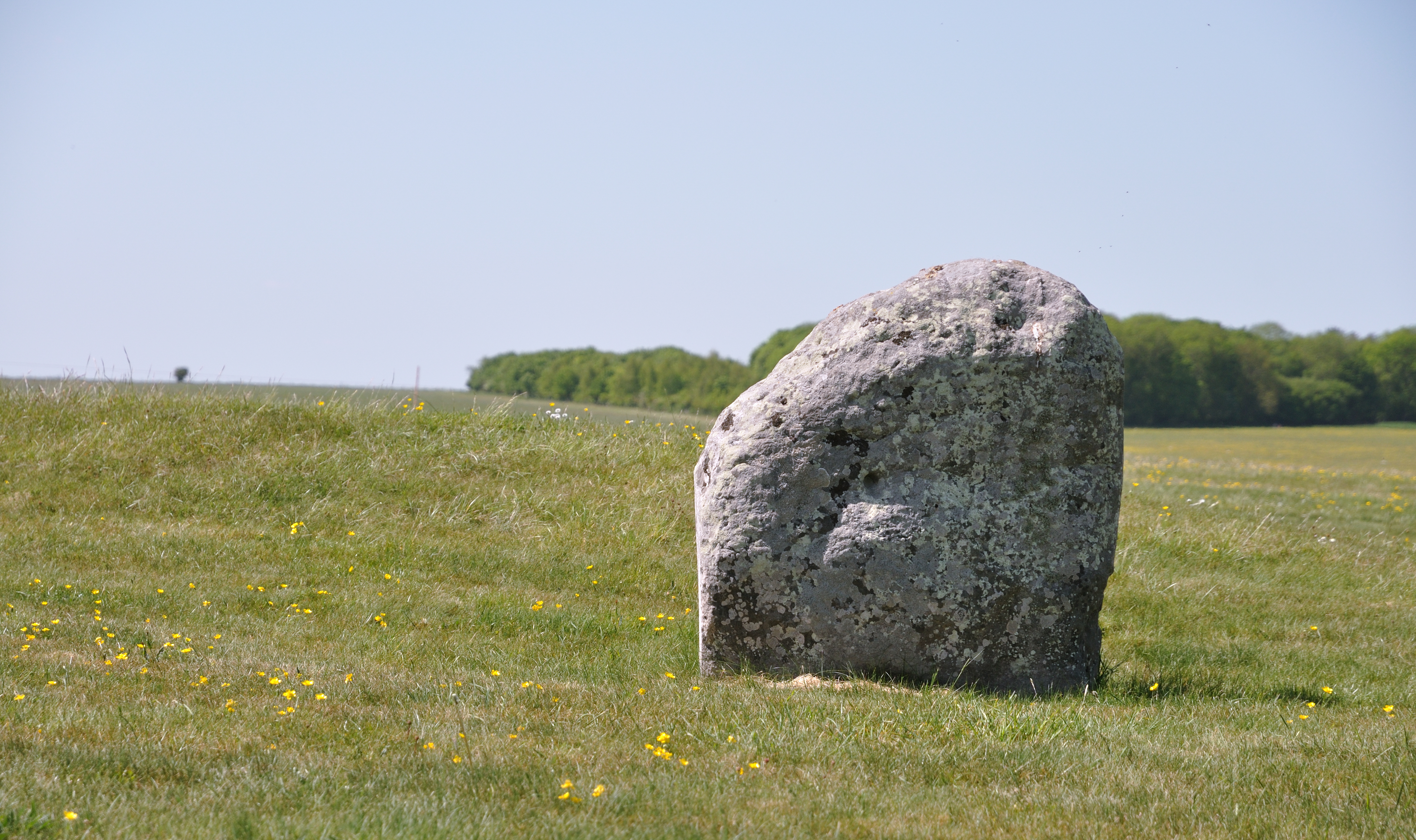Station Stones on:
[Wikipedia]
[Google]
[Amazon]
 The Station Stones are elements of the prehistoric monument of
The Station Stones are elements of the prehistoric monument of
 The Station Stones are elements of the prehistoric monument of
The Station Stones are elements of the prehistoric monument of Stonehenge
Stonehenge is a prehistoric monument on Salisbury Plain in Wiltshire, England, west of Amesbury. It consists of an outer ring of vertical sarsen standing stones, each around high, wide, and weighing around 25 tons, topped by connectin ...
.
Originally there were four stones, resembling the four corners of a rectangle that straddles the inner sarsen
Sarsen stones are silicified sandstone blocks found in quantity in Southern England on Salisbury Plain and the Marlborough Downs in Wiltshire; in Kent; and in smaller quantities in Berkshire, Essex, Oxfordshire, Dorset, and Hampshire.
Geology ...
circle, set just inside Stonehenge's surrounding bank. Two stood on earth mounds at opposing corners, one corner broadly in the north of the site and one in the south. The mounds are called the North and South barrow
Barrow may refer to:
Places
England
* Barrow-in-Furness, Cumbria
** Borough of Barrow-in-Furness, local authority encompassing the wider area
** Barrow and Furness (UK Parliament constituency)
* Barrow, Cheshire
* Barrow, Gloucestershire
* Barro ...
s although they never contained burials. The ring ditch
In archaeology, a ring ditch is a trench of circular or penannular plan, cut into bedrock. They are usually identified through aerial photography either as soil marks or cropmarks. When excavated, ring ditches are usually found to be the ploughedâ ...
es surrounding these barrows respect the presence of Stonehenge's encircling bank indicating that they postdate this feature.
The other two corners of the rectangle are occupied by the two surviving stones which are undressed sarsens. Their installation at the monument dates to sometime in Stonehenge phase 3, perhaps around 4,000 years ago.
Various astronomical alignments have been suggested for the stones, all involving other features at the site. As they cannot be said with certainty to have been contemporaneous with other stones or posts at Stonehenge, archaeoastronomical
Archaeoastronomy (also spelled archeoastronomy) is the interdisciplinary or multidisciplinary study of how people in the past "have understood the phenomena in the sky, how they used these phenomena and what role the sky played in their cult ...
theories regarding their function have been treated with scepticism by mainstream archaeology
Archaeology or archeology is the scientific study of human activity through the recovery and analysis of material culture. The archaeological record consists of artifacts, architecture, biofacts or ecofacts, sites, and cultural landscap ...
. Although described as forming a rectangle, the two stones and the two stone settings can also be described as representing two opposite facets of an octagon. This suggests that they were laid out to a geometric plan and challenges the theory that the positions were astronomically determined.
References
Bibliography
* *Mike Pitts, ''Hengeworld'', London: Arrow, 2001, *John Edwin Wood, ''Sun, Moon and Standing Stones''. Oxford University Press, 1980, {{Stonehenge Stonehenge